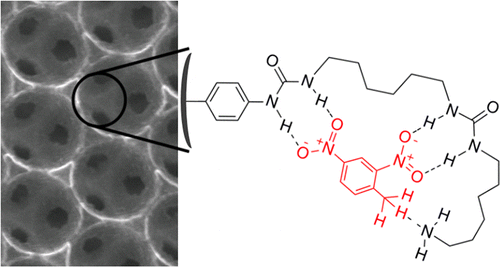

Main navigation | Main content
08/28/2012
Recent research from the research group of Professor
Chemists with the departments of chemistry at the University of Minnesota and Hamline University have published their latest research important to the detention of explosives. Their work was accepted for publication in ACS Applied Materials & Interfaces.
The article "Receptor-Based Detection of 2,4-Dinitrotoluene Using Modified Three-Dimensionally Ordered Macroporous Carbon Electrodes," was written by professors Philippe Buhlmann and Andreas Stein, Eric Olson, Ph.D., who was advised by Buhlmann, and Melissa Fierke, an assistant professor at Hamline University who was advised by Stein.
Detection of explosives, such as 2,4,6-trinitrotoluene (TNT), is becoming increasingly important. Here, 2,4-dinitrotoluene (DNT, a common analogue of TNT) is detected electrochemically. A receptor based electrode for the detection of DNT was prepared by modifying the surface of the walls of three-dimensionally ordered macroporous (3DOM) carbon. Nitrophenyl groups were first attached by the electrochemical reduction of 4-nitrobenzenediazonium ions, followed by potentiostatic reduction to aminophenyl groups. Chemical functionalization reactions were then performed to synthesize the receptor, which contains two urea groups, and a terminal primary amine. Detection of DNT using cyclic voltammetry was impeded by a large background current that resulted from the capacitance of 3DOM carbon. Detection by square wave voltammetry eliminated the background current and improved the detection limit. Unfunctionalized 3DOM carbon electrodes showed no response to DNT, whereas the receptor-modified electrodes responded to DNT with a detection limit of 10 μM. Detection of DNT was possible even in the presence of interferents such as nitrobenzene.
To read or download the article, go to http://pubs.acs.org/doi/abs/10.1021/am301108a.
